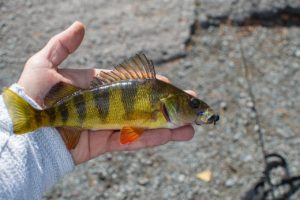
It is (rightly) considered one of the symbol fish for what concerns lake fishing. Rumors circulate about
fans. A deservedly earned reputation. In the beginning, approaching it is really, really difficult. The tasty
flavor of royal perch, however, rewards with due interests.
His fillet is so tasty that many prefer it to salmon trout . But this is only one aspect that feeds its charm.
Lake Perch Fishing: Characteristics
The perch is a freshwater predator. Certainly not confusing with other species. The livery, entirely green, is characterized by streaks on the back. Orange fins inspire sympathy.
However, it is mainly the way he eats the bait that distinguishes it , as well as the strenuous resistance it opposes when it takes the hook. With a particularly large mouth, many small teeth knock out the bait before the final swallow.
To separate it from the hook , open the light perch with light thumb pressure and unfasten it. Be careful not to force your jaw too hard. Since it often moves in packs, it is possible to score excellent loot in a short time.
However, flushing it out requires a lot of patience. Waiting, without frenzy, the fleeting moment is fundamental. As well as observing the environment with a lively eye. Better therefore to give up if tenacity and obstinacy leave something to be desired.
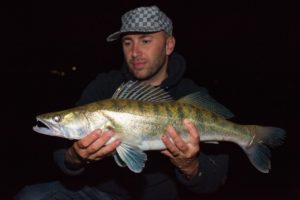
When to fish for perch at the lake
The ideal time starts in June, and peaks in early July, when the temperature reaches 20 degrees. Rutile and bleak move very much in the current points.
The royal perch feeds mainly on their young, about 2 to 3 cm long and born the same year. Throwing in the catch is fun: hunt the little fish almost at the surface level. Even though it is tempting, I remember that some regions prohibit capture in April and May.
Useful information for perch fishing
Going for research implies maximum concentration. This fish can make itself invisible and difficult to catch. Shrewd enough to hunt prey in total silence below the surface. It moves in low areas or near submerged vegetation.
However, he is often seen on the shore, moved by curiosity. The depth and temperature of the lake mirror , the size of the basin, the possible presence of obstacles influence its behavior. Her favorite victim is fodder fish . Which exerts a strong attraction towards him.
That is why following its deeds can prove to be a production strategy. Alone, or together with a few alike, the royal perch navigates the bottom towards invertebrates such as worms and larvae.
Attention to the smallest details
In fact, calm and discipline are essential ingredients. Otherwise, frustration emerges. Anyone who is now a veteran knows that it is up to him at least to take time.
This lapse allows to establish the presence or absence of water. Provided that you have adequate sensitivity in detecting the change of a body of water.
Light, impalpable nuances help to determine if the real perch is around. The availability or not varies according to factors such as the time, atmospheric pressure (in relation to weather conditions) and changes in brightness.
A reliable shoulder is ideal: it will keep other fish in check. Assuming you hold on in the via gear or during recovery.
Perch fishing in small lakes
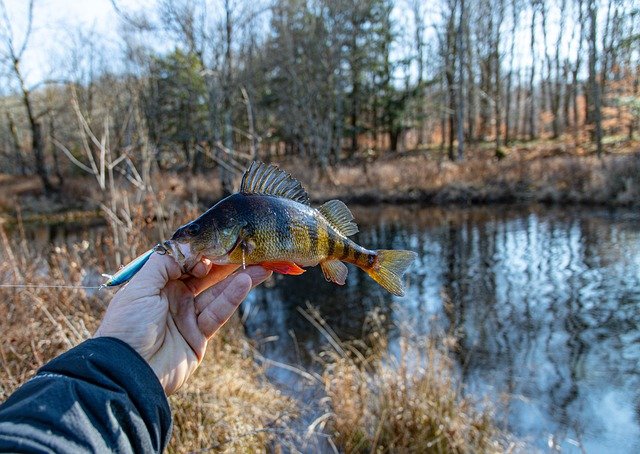
Except for the winter, perch can be found in the sub-stream. Watch out for grassy pitches, obstacles, branches and grainy bottoms. There are no absolute rules on recovery: it is sometimes effective if slow and constant; in other circumstances, lightning fast action leads to better results.
The launchers have free choice between monofilament, fluorcarbon and braided . An artificial bait mounted with the monofilament, given its elasticity, will prove more natural and less rigid to the perch. But, on the other hand, the sensation in the rod of the eaten will become less evident. And the fish will therefore have greater escape routes.
As for the monofilament, it is advisable to entrust your hopes to the steel cable. Maybe flanked by reduced carabiners.
Thus the small baits move correctly and remain priming. Another interesting aspect concerns the cable or the thickness of the wire. The sinking speed of the artificial bait and the ability to keep it from falling affect the duel.
Perch fishing in large lakes
The speech here changes. In large environments, where fishing blazes 365 days a year, a strategy mainly based on research is put in place. Using the boat and the depth sounder, where legally authorized, is essential to attack the flocks. And make excellent catches.
Following the period of scrub (i.e. reproductive) real perch preside over the shallow waters, which are particularly luxuriant as vegetation.
In any case, in summer and winter fishing it would be a good thing to scan the steps, the changes in depth and the margins of the shallows. The search becomes more complicated in open waters.
Medium-low level fishermen should head for the center of the lake . Layers of thermocline conceal thick packs. To which the perch also join. Thermocline refers to a stretch of water where the temperature differs from the surrounding areas.
A rather reliable value regarding the depth where it is easier to meet the predator. Temperature, brightness and oxygenation cause fish to proliferate.
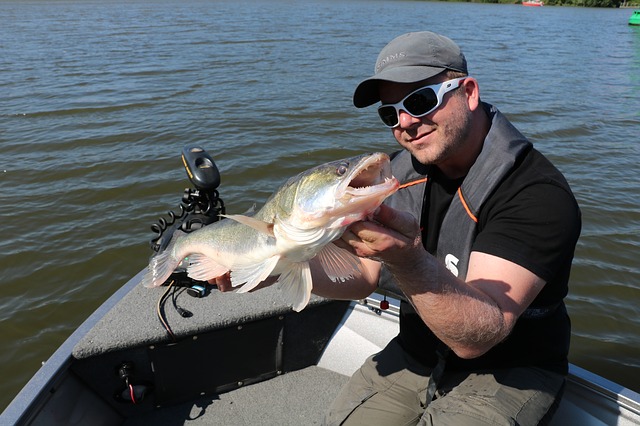
Echo Sounder
In full navigation, if, well regulated, it will signal where there is a certain turbulence. It is nothing but the evolution of the sounder, an instrument that sailors have used for millennia. The same Sonar technology ( Sound Navigation And Ranging ) makes it effective .
Basically, it records the time between the emission and the return of the sound impulse. A value then halved. Thus notes the depth of the water. Paying attention to the depth, it will emerge that, in that specific area, the turbulence always stays at the same height.
Up to a certain age he leads a gregarious life, in pack. Over time, large specimens become lonely. Once the coveted prey has been found, they go into action.
The perch herding stick baits simultaneously. Based on the success achieved by the strategy pursued, color, size and type of bait will be adjusted .
Equipment and techniques
Generally it is enough to take a spinning rod from 15 to 20 meters in length. Not excessively fast, with a throw range of up to 20 grams.
Thanks to the tool it becomes easy to maneuver small , rotating minnows, silicone grubs, mounted on leaded heads and rubber shads.
The light reel, it is important that it is fast and reliable. For rods , spinning ones are fine, sensitive and nervous, or vertically, with the armrest on the line. We strongly recommend, in recovery fishing, taking care to adopt a fairly rigid gear.
As a result, the perception of fish touches and bites increases significantly .
With regard to the terminals, a 20mm fluorcarbon is suitable for all conditions. For suspicious fish the diameter can be reduced.
Perch fishing hook
Not one, not two, but 5 hooks. It is the peculiar trait. A colored plastic tube, usually red, is fixed on each.
Throw the coin box in the middle of (small bleaks, red tails etc.) and wait for the little ones to bite.
They will come running, making small calls with the rod .
The gleam of the hooked fish will attract predators : if they make a sudden attack in the area.
Spinning fishing for perch
In the summer, the perch are stationed at various depths. And that’s why spinning them is exciting.
As a first step, we take the rotating baits : indicated a Panther Martin Size 4, with silver headstock and red or even yellow body. And Mepps (or Ilba) Size 2 with silver or golden headstock.
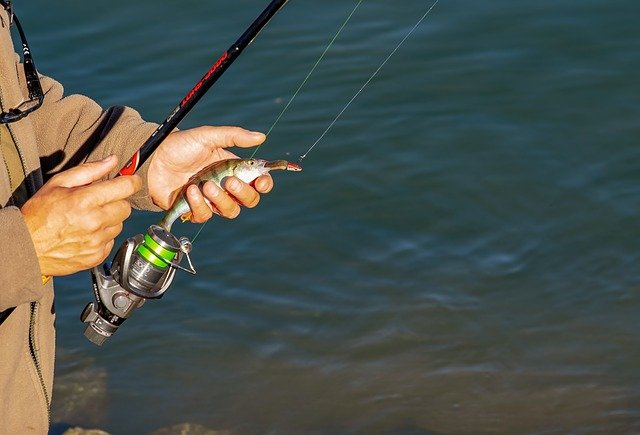
However, in recent years it has spread on the market lures with spinning custom, as minnow, jerk, crank, lipless and grub . In addition, baits dedicated to light games find a massive appeal. Lightweight, they always reserve surprises. On a boat, the launch must be performed from the center of the lake in the direction of reeds.
Natural bait for perch fishing
As an omnivorous predator, royal perch likes worms and maggots. It gives its best in the autumn season. But it should also be pointed out that situations of heavy humidity feed juicy catches, both from the boat and from the shore.
Perch fishing with live fish
Modus operandi that entices several fishermen. The greedy perch leaves for the small fish. And, taking the bait, he swallows it on the spot, returning to his lair. Except then fall to the bottom.
The scene is bloody, but, in a sense, spectacular. To challenge the perch to the best, first of all, a light-action rod is needed: indicatively, it must weigh between 1 and 10 grams, with a length of 1.80 / 2.10 meters.
Therefore fit a spinning reel of size 1500-2000, with 0.18 on the reel. Nylon and braided are equally valid options: it depends on the fisherman. Broadly speaking, the nylon dichroic, neutral colors, is welcome in less demanding trips.
While in order to grab medium-large perch, perhaps joined by trout perch in environments bristling with obstacles, the braided line wins.
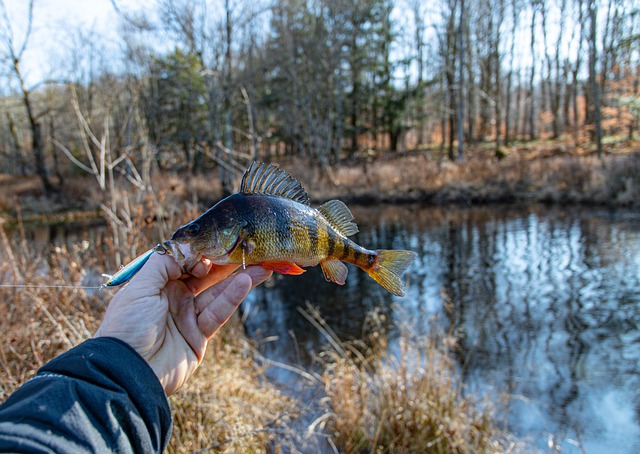
In support crank from 3-5 cm . This expression identifies the artificial baits that reproduce the fodder fish as features. In order to avoid getting stuck on the bottom, and to quickly reach greater depths, it contains a pallet as big as dimensions.
Equally valuable are the rotating spoons , already mentioned above: sizes 1, 2 and 3 are more than good.
A prudent precaution is to replace the treble hooks with barbless models : they preserve the mouthparts of the fish. At the same time they facilitate the release of the prey and respect the perch.
Drop shotting for perch
It is conceived and studied to capture the bass . But it also lends itself perfectly to royal perch. Compared to those used on the shore, it provides for shortened rods. To mount them correctly, one or two hooks are tied to the main line, fixing the lead to the lower end.
At the edge of the boat , he let down the lead in deep . In the meantime continue to slightly raise the frame and the baits, resuming contact with the bottom.
During the process, alternate pauses, tremors and ups and downs. In eating, you usually have to wait a few moments before shoeing. But every season and every place has unique characteristics.
The precise timing of the via gear therefore varies, also in relation to the supervised spot .
Jigging for perch
Profit vertically or with long casts. The artificial bait must touch the water, to then recover the excess pole.
Then the artificial is allowed to descend into depth. High guard, however, always: you can also eat when you go down. With the bait reaching the bottom, the wire will go slightly out of bounds. And from here the game will start.
Several fishermen go to work with the reel. Alternate half a turn (or one turn at most) of the reel and breaks. Or the tip. Raised, the artificial bait is detached vertically from the bottom: to go back up, just take a break. If there is poor sensitivity of the bait on the bottom increase the weight of the head.
The end lines , attached with one or more armrests, give satisfaction in fishing vertically, on obstacles. Where, through lead, they reach the seabed, and then bring the jig back to the surface, trying to probe all the layers of water nearby.
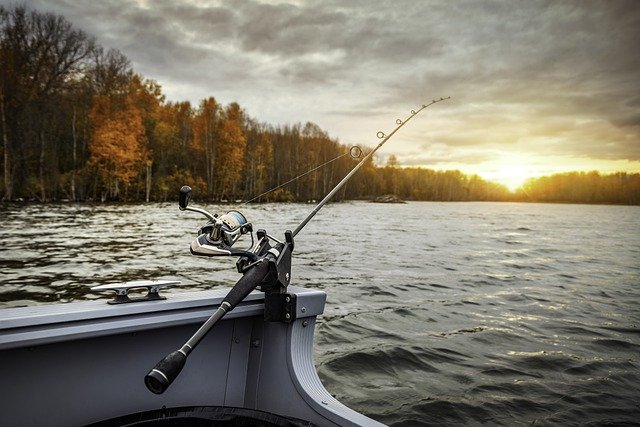
The main line can otherwise be based on a terminal or flourish. To be connected directly to the main line with a triple swivel.
Then a sinker , inserted there, drags it in depth and is left free. It is a transversal search, aimed at identifying fish in the adjacent water layers.
Ledgering in perch fishing
The static bite is also capable of arousing interest in real perch. To take it you need a rod from 3.60 to 3.90 meters, with maximum action included in the range 60/80 grams.
The tops exhibit a colorful painting. They highlight the fish touches, placing emphasis also on the less marked ones. Mount a reel of size 2000/3000 and load it with 0.16 on the reel . Along the beam insert an anti-tangle stopped by a bead and swivel.
A 30-40 cm terminal with hook no.12 short-stemmed triggers two maggots . There is a slingshot to feed in the chosen area. Stuff it with corn, maggots and a splash of red mash: it will give a brownish mix. Before fishing try with some preventive launch.
Have a successful perch fishing trip!
